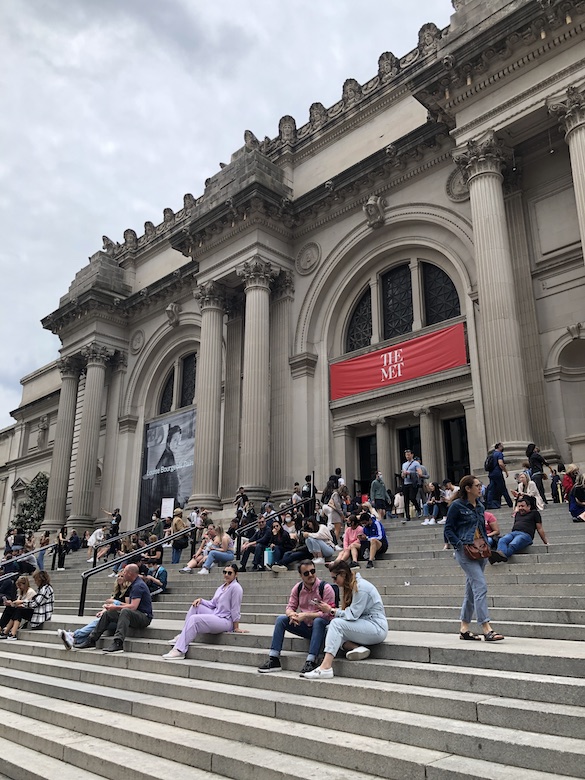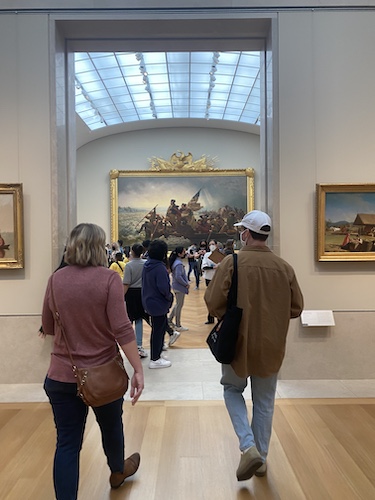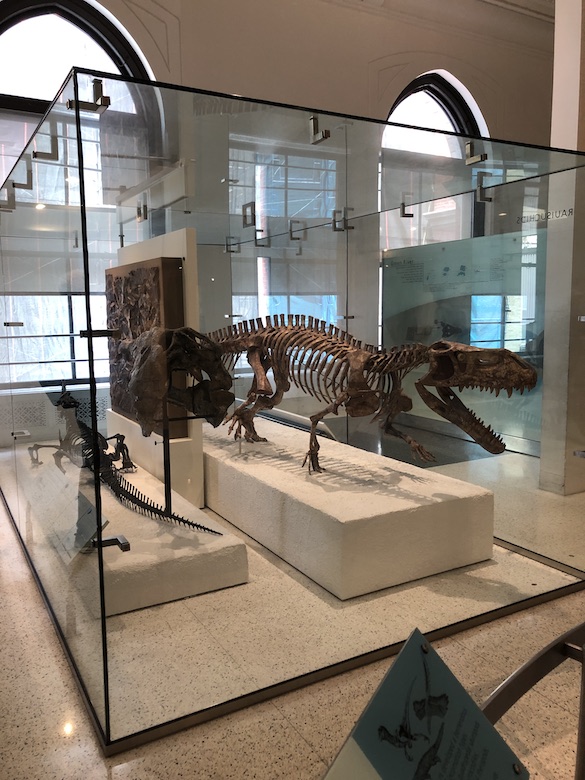UM students explore city and learn about museums during intersession

The Met Museum in New York City.
OCTOBER 15, 2022 BY ABIGAIL MARTIN
This spring during intersession, the Museums on Location course traveled to New York to observe the innerworkings of museums firsthand. The course is open to all students at the University of Mississippi, not just those who are Museum Studies minors in the College of Liberal Arts.
Both the trip and the minor are spearheaded by Kariann Fuqua, director of museum studies and an instructional assistant professor of art. “I have been working in museums and galleries since I was an undergraduate student,” she said. “Some of my past positions have been as a gallery director and curator of exhibitions and collections in Chicago and Washington, D.C. As a practicing artist, I have also been involved with the museum world throughout my career.”
“For students interested in Museum Studies, it is imperative to have opportunities to visit museums, see exhibitions, and experience first-hand how they function. New York is an epicenter of museums that beckons visitors from all over the world and this trip provided an exceptional experience for students to study them in-person.”

Museums studies students in NYC.
Museum studies student Reese Anderson, an English and interdisciplinary studies double major who took the course in May, said, “The educational objective of the trip was to look at several different types of museums, not just ‘oh, let’s hit up all the big art museums’ or like, ‘ooh, just history museums.’ There are over 100 museums in Manhattan alone, so we tried to go to all the different types.
“We visited two museums a day for the whole week, except for the last day when we had a private tour of the Guggenheim with the head lighting designer. That’s one of my favorite memories from the trip, we got to look behind the scenes.”
In four days, the class visited six museums: the 9/11 Memorial Museum, the Tenement Museum, the Metropolitan, the American Museum of Natural History, the Morgan Library, and the Guggenheim.
As for her interest in the course and minor, Anderson said, “The reason I chose Museum Studies in the first place is because I like museums, and I like being in them and I think that’s reason enough!”
Another student who went on the trip, classics major Gus Powers, found his way into Museums on Location separately from his major and minor courses. “I had an inkling that I wanted to work in museum space, so I reached out to my advisor and she put me in contact with Professor Fuqua who told me to come on this trip to New York.”

The American Museum of Natural History
Despite not being a Museum Studies minor, Powers was still able to take the course.
“Anyone can come on these trips, not just people minoring in museum studies!” said Anderson.
Powers describes his experience in New York and the related course work, “We had a prescribed schedule, and then for two days we had a free afternoon and those were really, really fun days. We explored New York and whatever museums we chose. Then we reported back on it.
“The class was structured really well. It was discussion and hands-on learning with free responses for the majority of the coursework, and we did most of it through the Discord app where you could read your classmates posts and have it with you at the museum on your phone–it was very convenient.”
As for anyone interested in taking this course next May, Fuqua said, “Museums are a cornerstone of society and reflect our cultural heritage, history, and creative pursuits through their missions. In the United States, New York is an epicenter of over 100 museums and a fantastic city in which to explore these complex institutions. Anyone interested in learning more about how museums function and experiencing them in-person with guided tours will leave this course with a new appreciation of their vast impact on our communities.”